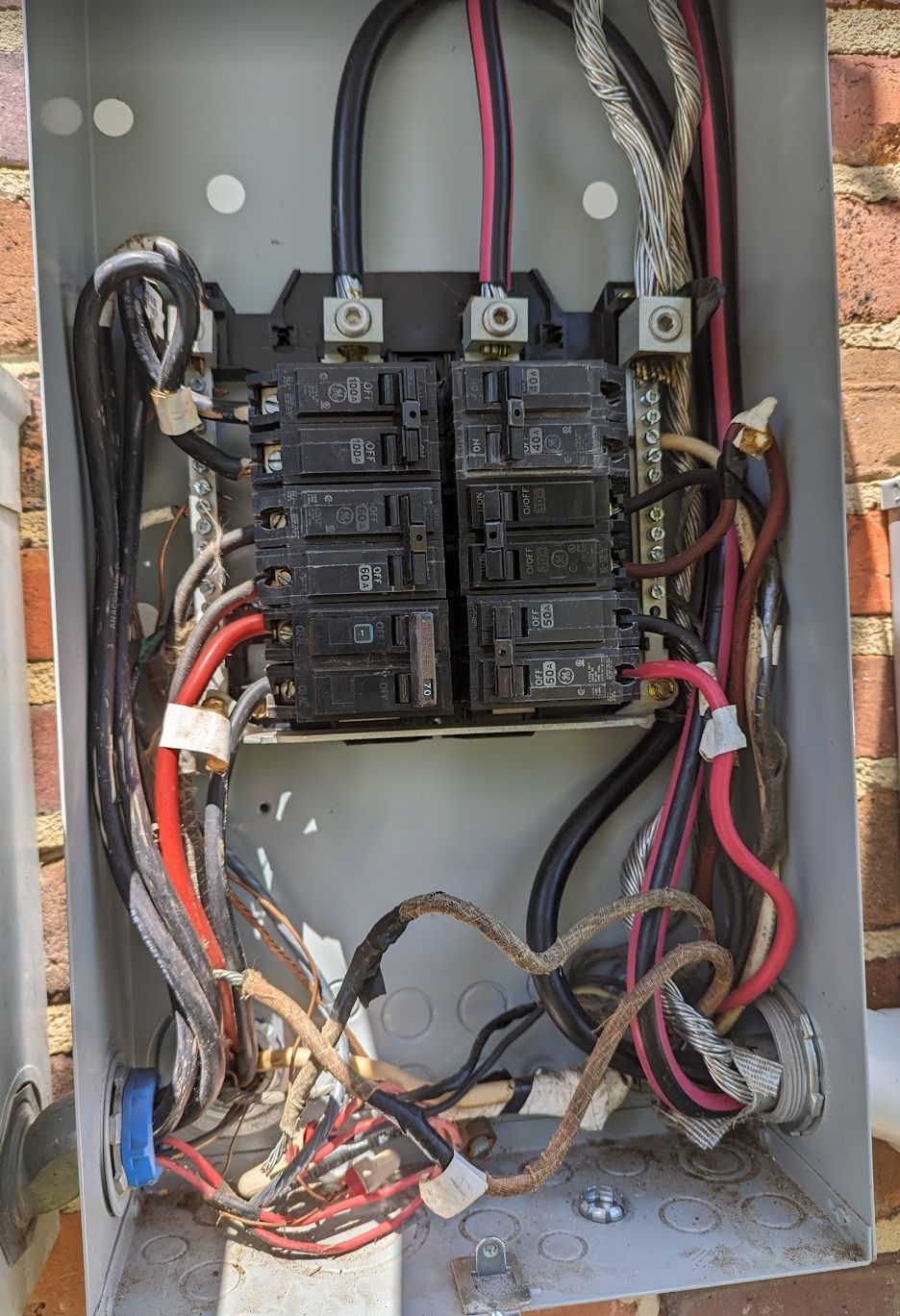1962 house with a lot of bad wiring, and I want to add a EV charging circuit without making it worse. I think I understand my options but hoping there is one I am missing. Homeowner not electrician but trying to do things right. USA.
The house has two panels at service entry, the main has 6 largish breakers (no main), and adjacent to it is a subpanel fed with one of those at 100a. Two other subpanels inside the home are also fed from this (so total of 3), the other three breakers appear unused though two have cable attached.
These two panels are outside on a brick wall surface mounted; 4 of the cables from the main one (2 unused) go through two openings in the back of the panel thru brick into a wall behind it, and up into the attic. They are all cable assemblies (I hesitate to say type as they are so old no labels are visible, but like NM-B). These holes have a connector but no conduit, the cables go through raw brick into the wall. The second panel is also mounted on the brick but uses conduit to go up and thru the attic above the brick. I can't fit into the attic and that conduit is very full and for other reasons want to avoid that panel.
The room behind the panels is a garage and where I want to put a charger. It's a charger suitable for hardwire at 48a (60a breaker) if #6 THHN is used in conduit. Max wire size is #6 for connection to it.
I can't run THHN without a new hole in that panel for conduit, and I do not want to go thru the old, crumbing brick and mortar again, or drill into a panel with no cutoff.
I want to pull the unused cables from the panel freeing up space in the current holes and use them. My impression is that leaves me choices of:
Use 6-2 NM-B and limit myself to 50a breaker and 40a charge (I guess in theory 55a breaker but I am unclear whether I can find any and hazy on using 60a as next higher).
I could use 4-2 NM-B to a small subpanel/junction in the garage where I can connect to 6-2 THHN and do 60a/48a keeping thhn in conduit to the charger. Except 4-2 doesn't seem to exist, and I am not sure I could get 4-3 thru those holes (if I could even find some by the foot, no luck locally or online).
I could put the charger outside but that rather defeats the purpose of a garage.
And that's all I can think of.
Am I missing anything? No kind of 75c/60a rated cable I can run into that panel without conduit inside a wall, right? (I'm ignoring options with SE cable as I don't want to run aluminum, and besides not sure that solves any issues with larger sizes).
Hoping for options to get the full 48a charge, but I think I'm stuck with 40a with these limitations. Am I?
Linwood


